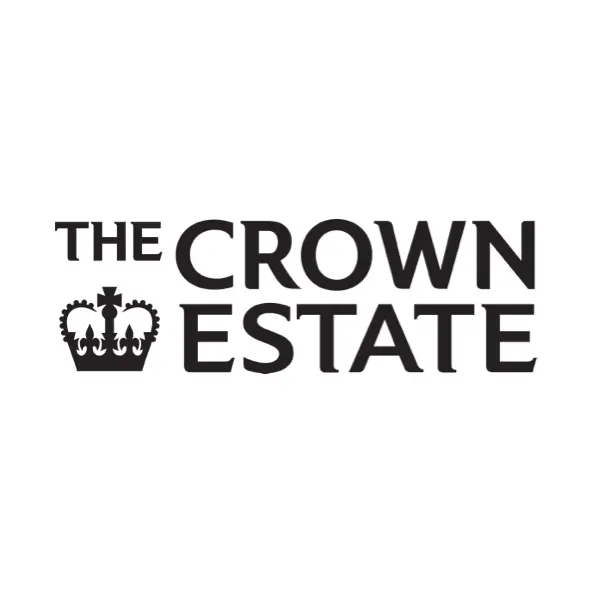genericSection
DE_Data > Data Strategy_HERO
Data Strategy
Optimieren Sie die Beziehung zwischen Geschäftsergebnissen und Dateninitiativen.

Page Hero Image Overlap
False
grid
DE_Grid Four Columns - DataStrategy
Wie wir helfen.
Wir helfen Ihnen, einen klaren Datennarrativ für Ihr Unternehmen zu entwickeln, gepaart mit einer Roadmap, um Ihre Transformation zu führen. Einige typische Kundenherausforderungen und -möglichkeiten sind aus unserer Sicht folgende.
DE_DataStrategy - Element - Competitors
Unsere Wettbewerber investieren zunehmend in Daten. Wir wissen, dass wir dasselbe tun sollten, sind uns aber nicht sicher wie.

False
DE_DataStrategy - Element - Buzzwords
Wie sollen wir auf die neuesten Daten-Buzzwords und -Trends reagieren? Müssen wir KI und maschinelles Lernen einführen?

False
DE_DataStrategy - Element - Invest
Wir haben viel in Daten und Technologie investiert – aber niemand scheint diese zu nutzen.

False
DE_DataStrategy - Element - Acquisition
Wir haben eine Reihe von Akquisitionen hinter uns und müssen unsere Strategien und Arbeitsweisen vereinheitlichen.

False
DE_DataStrategy - Element - Innovation
Wir können unserer Konkurrenz einen Schritt voraus sein, indem wir frühzeitig in Daten investieren und sie zur Steuerung von Innovation und Betriebseffizienz nutzen.

False
DE_DataStrategy - Element - Connect
Wir verstehen Daten, aber sie könnten mehr für uns tun: Wir verbinden Daten nicht ausreichend mit unserer Geschäftsstrategie.

False
DE_DataStrategy - Element - Customer
Wir müssen verstehen, was einen ‚guten‘ Kunden ausmacht – und was einen ‚großartigen‘ Kunden auszeichnet.

False
DE_DataStrategy - Element - Products
Wir wollen Daten besser nutzen, um neue Produkte und Dienstleistungen zu entwickeln.

False
0
Grid
Four Columns
White
Center
With Borders
Small Image
Default
genericSection
Empty-Space_White_LINKED
Empty Space
False
White
genericSection
DE_Diagram_Our resources and capability - DataStrategy
Unser Ansatz zur Datenstrategie.
Verknüpfen und Priorisieren von Dateninitiativen mit Ihren Geschäftszielen.

Single Image
False
Black
genericSection
DE_Data Strategy -ValueProp-DataVision
DE_DataStrategy - Data Vision
Datenvision.
In enger Zusammenarbeit mit Ihren Stakeholdern entwickeln wir umsetzbare Datenstrategien, die Ihre Investitionen prägen und steuern. Wir ordnen den Geschäftszielen Dateninitiativen zu – identifizieren zunächst die Datennutzen und erstellen dann eine übergreifende Datenvision, die mit den unternehmerischen Ambitionen zusammenspielt.
Wir nehmen uns Zeit, um zu verstehen, was Ihr Unternehmen von anderen unterscheidet, die Herausforderungen und Chancen, mit denen Sie konfrontiert sind, die Treiber für den Wandel in Ihrer Branche und die sich entwickelnde Wettbewerbslandschaft.

False
Value Proposition
False
Left
genericSection
DE_DataStrategy - Maturity Assessment
DE_DataStrategy - Maturity Assessment
Maturity Assessment.
In einem nächsten Schritt analysieren wir Ihre bestehende Data Maturity anhand unserer proprietären Benchmarking-Tools und vereinbaren einen Soll-Zustand, um Ihr Datenpotenzial auszuschöpfen. Als Teil davon setzen wir gemeinsam Initiativen um, die darauf abzielen, die Data Maturity auf ausgewogene Weise zu beschleunigen.

False
Value Proposition
False
genericSection
DE_Data Strategy ValueProp-Roadmap
DE_DataStrategy - Roadmap
Roadmap.
Mittels Ideenfindungs- und Planungsframeworks erstellen wir schließlich eine Roadmap, um Ihre Datentransformation zu steuern, und identifizieren eine Reihe von zeitnahen Initiativen, um schnell Mehrwert zu liefern und mit Drive den Weg zum datengesteuerten Erfolg zu beschreiten.
Wir arbeiten mit Ihnen zusammen, um erste Datenprojekten mit einem hinreichenden Detaillierungsgrad zu spezifizieren, um einen ersten Schritt Richtung Umsetzung zu schaffen. Wir unterstützen Sie auch dabei, einen High-Level-Investment-Case zu erstellen, um interne Freigabeprozesse zu beschleunigen und Pläne für das Buy-in von Führungskräften zu sozialisieren.

False
Value Proposition
False
Left
genericSection
DE_What it means to you table - DataStrategy
Wie wir arbeiten und welchen Nutzen Sie daraus ziehen können.
DE_How it work & what it means to you.
| Wie wir arbeiten. | Was es für Sie bedeutet. |
|---|---|
| Definition eines klaren Narrativs rund um die Rolle von Daten in der Zukunft Ihres Unternehmens. | Richten Sie Ihre Teams auf eine einzige Vision für Daten und ihre Beziehung zu Ihren wichtigsten Geschäftszielen aus. Helfen Sie den Beteiligten, das Potenzial und ihre Rolle bei der Förderung der Data Maturity zu verstehen. |
| Recherche & Analyse: Was Ihre Wettbewerber mit Daten machen und wie schnell sich Ihre Branche verändert. | Verstehen Sie die Treiber für den Wandel in Ihrer Branche und die sich entwickelnde Wettbewerbslandschaft. Lassen Sie sich von Erfolgsgeschichten inspirieren und vermeiden Sie Fallstricke. Eigendynamik schaffen. |
| Ist- und Soll-Zustandsdefinition. | Visualisieren Sie die Lücke zwischen der aktuellen und zukünftigen Fähigkeit, Investitionsfälle zu unterstützen und voranzutreiben, und binden Sie die Geschäftsleitung in die Reise ein. |
| Roadmap zum Zielzustand, entwickelt in Zusammenarbeit mit Ihrer internen Programmleitung. | Ein klarer Überblick über die primär durchzuführende Arbeit, die gegenseitigen Abhängigkeiten von Initiativen und Aktivitäten und eine gut spezifizierte Reihe von empfohlenen sofortigen ersten Schritten. Eine zusammenhängende Roadmap von Workstreams und Initiativen gibt Ihnen einen praktischen Weg zum Aufbau einer ausgewogenen Data Maturity. |
True
Base
False
genericSection
IN AKTION
DE_DATA - DataStrat CaseStudy
GAP Group
Erschließen Sie das Potenzial von Daten und Analysen, um Ihr Wachstum zu beschleunigen.
GAP Hire Solutions, gegründet 1969, ist das führende unabhängige Vermietungsunternehmen für Ausrüstung in Großbritannien. Mit über 140 Standorten bieten sie ein breites Sortiment an, das von Baggern und Werkzeugen bis hin zu Gleismatten und mobilen Toiletten reicht.
Die GAP Group suchte einen erfahrenen Partner, um eine effektive und umsetzbare Roadmap zu entwickeln, die den Zusammenhang zwischen Datenwert und Geschäftszielen stärkt. Unsere Datenexperten analysierten die Geschäfts- und Wettbewerbslandschaft der GAP Group, um Potenziale für datengesteuerte Innovationen zu identifizieren. Gemeinsam entwickelten wir eine Reihe von Projekten, die sich auf Schlüsselbereiche wie fundierte Geschäftsentscheidungen, bessere Kundenkommunikation und intelligente Entscheidungsfindung konzentrieren. Das Ergebnis war eine erfolgreiche Datenstrategie und ein Fahrplan mit Initiativen zur Umsetzung in den nächsten zwei Jahre.

DE_Logo- Data - Case Study - DataStrategy Services

Logo
False
Career Progression Services
False
Black
genericSection
Empty-Space_White_LINKED
Empty Space
False
White
Unsere Kunden
Ascent arbeitet mit über 150 Unternehmen im DACH-Raum, Großbritannien und den USA zusammen. Von globalen Versicherungen, Banken über Gesundheitswesen und Retail bis hin zu Big Tech und Weltraumforschung – wir arbeiten mit einigen der klügsten Köpfe in den innovativsten Unternehmen zusammen.
genericSection
DE_Explore our other data services - DataStrat
Weitere Dienstleistungen entdecken.
Mission And Values With Tiles
False
genericSection
Empty-Space_White_LINKED
Empty Space
False
White
genericSection
DE_[DATA SERVICE] Lets get started section
Let's get started.
Wir helfen unseren Kunden, bahnbrechende Produkte zu entwickeln, wichtige Daten- und Softwareprojekte durchzuführen und starke interne Teams aufzubauen. Sie stehen vor einer Herausforderung?
Wir sind bereit, wenn Sie es sind.

Get In Touch
False




































